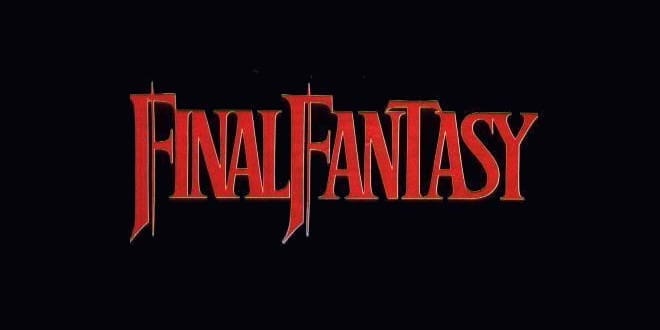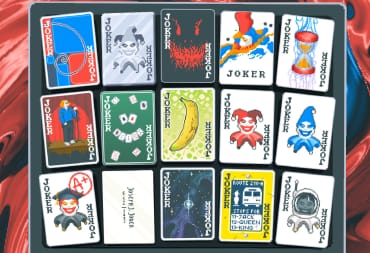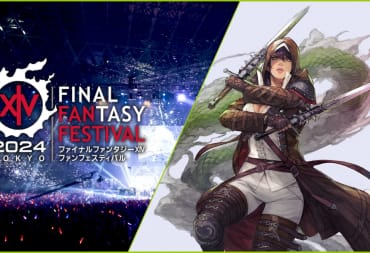Today marks the 25th anniversary of Final Fantasy's North American release. I feel like it's a good time to look back on this amazing franchise that is near and dear to my heart. In particular I want to look at the ways this series took chances by trying out new ideas with each game in the series, rather than falling into a stale routine. This article will not contain any deep analysis of plot or characters. This article is focused on gameplay, but in particular the way each game in the series allows the player to customize their party of playable characters. Since I'm not a fan of online games, I'm not going to comment on Final Fantasy XI or XIV.
The gameplay of the original Final Fantasy borrowed heavily from the Dragon Quest series. However, Final Fantasy did bring in one pretty big innovation to set itself apart. While each playable character in Dragon Quest had its own unique stats and abilities, they were locked into set classes. Final Fantasy gave the player the freedom to build their own party by choosing from 6 available classes. Most games in the Final Fantasy series refer to classes as jobs, while Final Fantasy XIII calls them roles. I will refer to them all as classes in this article, since it is a widely recognized generic term for this concept in RPGs.
You've got the Fighter—Warrior in later localizations—who soaks up damage and can equip the largest selection of weapons and armor. The Thief, who is quick and great at running away from battles. The Blackbelt, who deals out heavy physical attacks with his bare fists but can't equip decent armor or take very many hits. The Black Mage, who deals out devastating magic attacks and has one of the most iconic appearances despite the graphical limitations. The White Mage, who specializes in spells that heal allies. And finally, the Red Mage, a jack-of-all trades with decent physical attack and armor, who casts both healing and offensive magic but doesn't have access to the most powerful spells in either category.
With these 6 classes, a player can create any party of four characters they want. This adds replay value, as players can try out different combinations of classes and devise new strategies required to succeed with a particular group. Players can even challenge themselves by deliberately choosing an unbalanced party, such as the infamous 4 White Mage party. While seemingly trivial looking back on it after all these years, allowing the player to create a party of their choice was a major innovation that pushed Final Fantasy to top of the JRPG pack.
After achieving great success with Final Fantasy, and helping to stave off bankruptcy for Square, the developers made some pretty serious changes with Final Fantasy II. For one thing, classes were thrown out. This is a pretty ballsy move and is still pretty unusual for RPGs. Although it is a bit more common today with popular games like Fallout achieving success with a classless system. An even more unusual change in Final Fantasy II, gaining experience from battles and leveling up your characters, the bedrock of pretty much every rpg ever made, is gone as well.
In Final Fantasy II, every stat increases as you use it. If you want to build up your strength just use physical attacks, improve evasion by evading attacks, increase maximum HP by taking damage, and so on. Every character is able to learn every spell in the game, but those have levels and need to be cast many times to become more powerful. Characters also gain proficiency in different weapon types by repeatedly attacking with them. This innovative system was a huge departure from the previous game and indeed most RPGs available at the time. However, it does leads to some silliness once the player realizes the optimal strategy for improving characters is to get into a battle with a weak enemy who poses no real threat and have the playable characters repeatedly attack and heal each other to build their stats.
After the crazy experimentation in Final Fantasy II, the developers decided to get things closer to the original game when they made Final Fantasy III. Gaining experience after battle and leveling up was brought back and it also returned to a class-based system. One improvement is that the number of classes increases to about 20, and they also have a more diverse set of skills than the classes in the first game. However the biggest change is that instead of being stuck with classes that you picked at the start of the game, you can now change them in between battles.
This is a remarkable change. After being defeated by a tough boss in an RPG, my usual instinct is to go grind some levels and come back more powerful, but in Final Fantasy III, my instinct is to try the fight again with a different combination of classes. While there are a few trick bosses which strongly encourage particular classes, most fights have numerous viable strategies. This class system was a major innovation for the series and stands in stark contrast to the following game in the series, which offers basically no way to customize characters at all.
In Final Fantasy IV, all the characters have a particular class, which defines their stats and unique abilities. Unlike in previous games in the series, the player doesn't decide which classes the characters become. They are all predetermined. While this offers less freedom to players, it reflects the game's stronger emphasis on story and character than previous games in the series. Indeed, most of the characters' abilities match their personality. The best example is Edward, a rare Final Fantasy character who is close to useless in battle and whose main ability is hiding. This matches his wimpy personality pretty well.
Since the game offers no way to customize a character's abilities in any way, the game is more about making due with what you have. Every character has at least one unique ability, and some have several. The magic users often have a huge list of spells at their disposal. This means that there are usually numerous strategies available, even if the player is limited to predetermined classes.
Final Fantasy V saw a return to the class-based system of III. Once again you could choose which classes you wanted and change them around to try different strategies. A new feature is that as a character used a particular class, they would gain ability points which would unlock new skills with a particular class. This worked in conjunction with the normal experience points system, which allowed a character to level up and improve their stats.
Another innovation is that the game allowed you to pick a skill learned from one class and use it while playing as another class. This is still quite limited, since you only have one skill available at any time that doesn't belong to your current class, but it does add some versatility to the party and opens up even more possibilities for different strategies. This innovation on the old class system makes Final Fantasy V one of the most underrated games in the series. It is unfortunate that the game is so often overlooked and forgotten today.
Final Fantasy VI is perhaps best known for further pushing forward video game story telling, but its gameplay was not too shabby either. On one hand, the game resembles Final Fantasy IV because each character has a unique ability which is predetermined and usually matches their personality or backstory in some way. On the other hand, the game also offers a system for every character to learn a variety of spells by equipping magicite. This game offered a balance rarely achieved in the series, by giving characters unique abilities that made them distinct, but still allowing some versatility through the magicite system.
The way magicite works is that for each battle won with a piece of magicite equipped, you get points toward learning a spell. Once it was learned, you could use the spell whenever you wanted and you could then pass the magicite off to someone else so they could start learning it as well. With this system, every character could be a magic user, and while some were better at it than others due to stats, everyone was at least okay at it. This game really pushed forward the notion that every character can do every job reasonably well, rather than having distinct roles for characters to try to fill, something which would be taken further later in the series.
And then we come to Final Fantasy VII, a game which really brought the series into the mainstream, probably due primarily to the graphics. Most characters in the game are more or less interchangeable as far as gampeplay is concerned. While there are some minor differences in stats, it's not really a huge deal. The only really distinct abilities characters have are their limit breaks, which are special attacks that characters can use after taking a lot of damage. While they do get fancy looking and unique animations, they are all pretty much the same, and just deal out a lot of damage. Aerith is only one with unique limit breaks, which are focused more on healing. Too bad she gets killed off.
Pretty much all of the abilities in the game are learned by equipping materia. Unlike magicite in the previous game, materia isn't just for learning magic, but also for learning skills like steal. Also different from magicite is that you don't learn abilities permanently, but need to keep materia equipped in order to continue using it. If you have no materia equipped, all you can do is a physical attack or use items.
This is made more complicated by the fact that you have a limited number of slots in your weapons and armor for equipping materia. Buying better weapons isn't just about dealing more damage, but also about increasing the number of materia slots available. Also important is that some slots are linked together, and support materia can be equipped which improve the effects of a materia in a linked slot. All materia, for example, allows a spell to be cast on all enemies rather than just targeting one specific enemy. Overall, this system offers lots of freedom to the player to customize their characters' abilities and provides interesting choices to make.
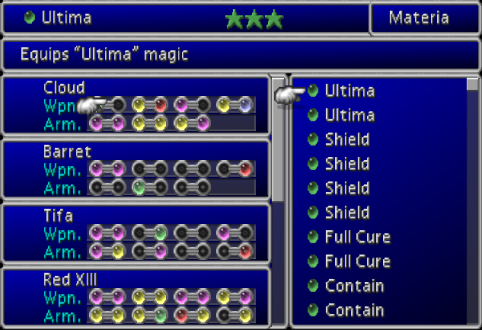
Then we come to Final Fantasy VIII, which is one of the most bizarre games in the series. As in VII, all the characters are basically interchangeable, with only minor stat differences. You don't really learn magic in this game, you use the draw command to draw a stock of spells from enemies. Different enemies will have different spells available. And once you have some spells in stock you can cast them until you run out, but that's really a waste, because the far more important use for spells is to equip them.
Basically how this work is you pick a stat, lets say strength, and you junction a spell you have in stock, like fire, to the stat and your strength stat will go up. And you can do that with all your stats with whatever spells you happen to have in stock. How much the stat goes up by depends on what spell it is and how many you have in stock.
If you want to really optimize your party, you need to do a lot of busywork to stock up on magic and go through a lot of trial and error to determine which spells work the best with which stats. There are other ways to stock up on magic besides drawing them from enemies, like refining items into spells, but they involve just as much busywork. Fan reaction to this system was split between those who hated the overly complicated and incomprehensible system, and those who enjoyed learning this new system which was completely unlike any other RPG.
Taking a step back from the weirdness of Final Fantasy VIII, IX reintroduced some familiar elements. Taking a break from the interchangeable characters of the last two games, characters once again had established classes with abilities and skills to match. Characters could also learn new abilities by equipping items. Unlike VI and VII, which had special items like magicite and materia to teach new skills, in IX skills are learned just by equipping your regular weapons and armor. Equipping a certain staff might teach the black mage thunder, while a sword might teach a knight a powerful sword attack. Mechanically it is pretty much the same as magicite from VI; after winning a certain number of battles with the item equipped, the skills are learned permanently.
In addition to teaching skills that can be used in battle, items can also teach you passive abilities. Some of these might give immunity to status ailments like poison, sleep, and confusion. Others allow the character to do extra damage to certain enemy types. However, even after learning these passive abilities, only some of them can be active at a time. Characters have a limited pool of points that can be used to activate these support abilities. While each character has a distinct role to fill based on their class, this system still allows the player to fine tune the characters to deal with each situation.
Final Fantasy X introduced another innovation, the sphere grid. In this game, the only way to gain stats or learn new skills is to navigate across the sphere grid, a two-dimensional layout of connected nodes. Game mechanics aside, the visual design of the sphere grid is pretty cool, with cool symbols and nodes glowing once you've activated them. But after advancing a bit, the reality sets in that the sphere grid is actually very restrictive.
As you battle you will gain sphere levels, which allows you to move one position in the sphere grid. You can then activate a node at your position that might improve a particular stat or teach a new ability. The thing is, most of the time all your characters will be stuck on a single path, without any decision-making from the player. Advancing across the sphere grid just becomes more busywork. There are occasional branches, which gives the player some choice, and late in the game you can acquire things like the teleport sphere to move around the grid in interesting ways.
The result of this system is that characters are forced into classes to an extent, as they all start out stuck on their own portion of the grid with different skills available, but late in the game the player has a bit more freedom to move around the grid and abandon those classes. If you play the international version, you have the option of choosing to play in expert mode, which offers a bit more freedom. On expert mode, all characters start out at the center of a slightly different sphere grid, and the player can send them down any path they choose, with more opportunities to switch paths than the standard grid allows.
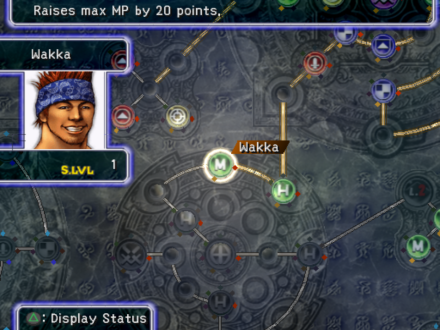
Final Fantasy X-2 borrowed heavily from Final Fantasy V. Once again, characters have the ability to switch between multiple classes. After winning battles, points are gained toward learning skills for a particular class. Unlike V, where skills were learned in a linear fashion, the player can choose the order they learn skills for a class. Possibly the biggest change is that players can now change classes in the middle of a battle, something which could only be done in between battles in V.
There is a limitation on this however. Each character has a garment grid, which has a limited number of nodes which have classes assigned to them by the player. During battles, characters can switch between nodes in the grid, but will not have access to classes not contained in the grid. This means each character will only have a few classes available for each battle.
Final Fantasy XII introduces the license board, which in many ways is similar to the sphere grid of X. It offers a 2D grid that gradually unlocks new skills and abilities. Unlike the sphere grid, the license board does not improve stats. Characters gain experience and level up to improve their stats in the normal way.
While the sphere grid had long paths with occasional branches, the license board is much more open. Except for licenses along edges, every new license unlocked will make 3 new licenses available. It is much easier to unlock any section of the board as any character, compared to the restrictive sphere grid. This also has the effect that there are no distinct classes, and characters are, once again, more or less interchangeable.
Final Fantasy XIII offers a system that marries the class based system of games like Final Fantasy V and X-2 with the stat and skill progression system of X. The game has only has 6 classes available. Characters will only have access to a few classes at the beginning of the game, but after reaching a certain point in the story, every character will have access to every class. As in X-2, you can change classes in the middle of battle. In fact, they introduced a feature called a paradigm shift where all 3 characters in the party change classes at once into configurations set up by the player ahead of time. While not a super huge change, it is a nifty little feature.
To improve stats and learn new skills, the player must interact with the crystarium, which is essentially a retread of the sphere grid from X. One big difference is that rather than having all the skills on a single grid, every class has its own grid, which advance independently. You can spend some points advancing the ravager class a little bit and then spend some points advancing the medic class a little bit. Or the player might opt to dump all their points advancing one class. While there is some choice in determining which class to advance, each individual grid is essentially a single path, with only occasional branches, allowing only minimal player input into the process.
Over the years we've seen a lot of innovation from Square. Rather than fall back on tried and true methods for customizing and improving characters, they introduced some experimental and occasionally controversial systems. I look forward to seeing what they come up with in the future.
Have a tip, or want to point out something we missed? Leave a Comment or e-mail us at tips@techraptor.net
